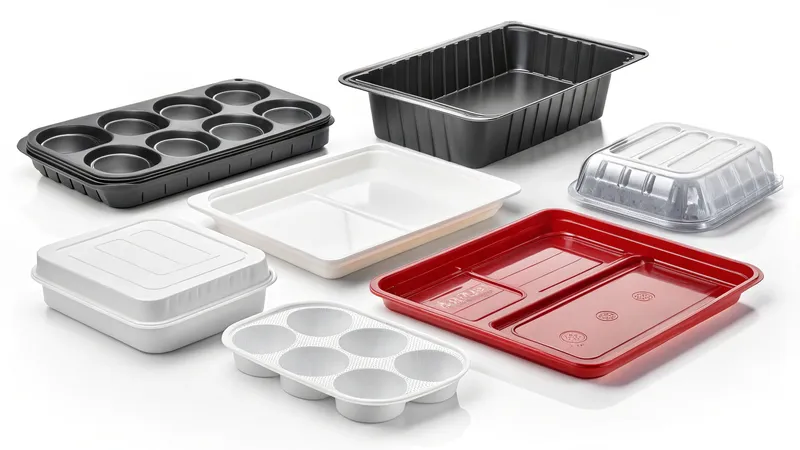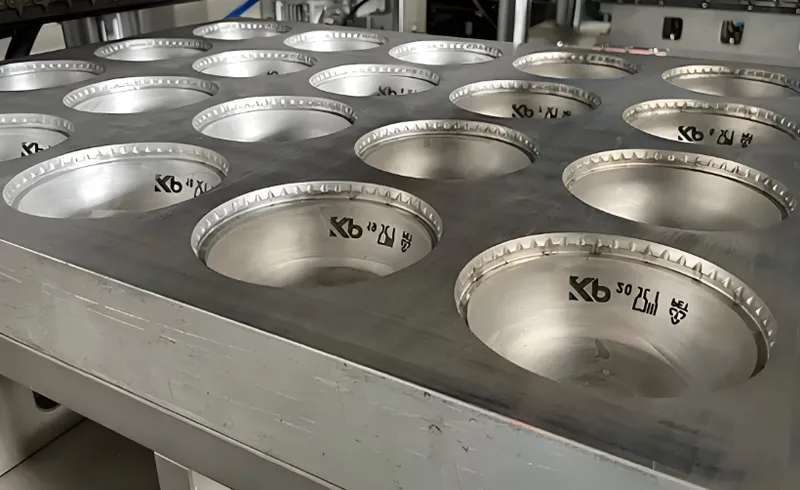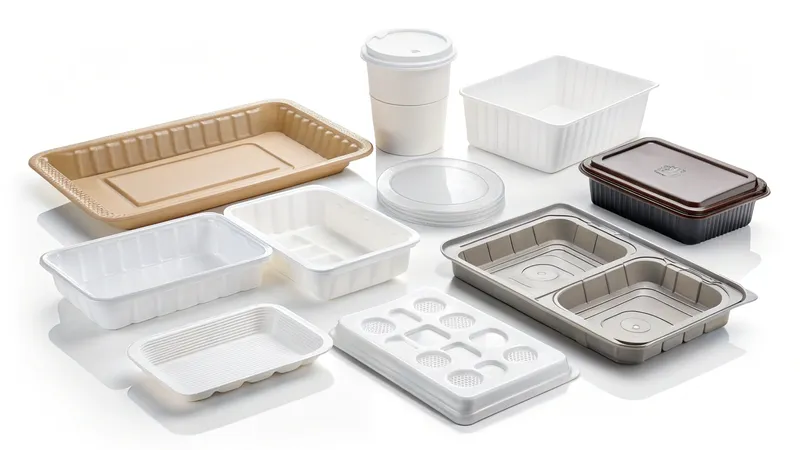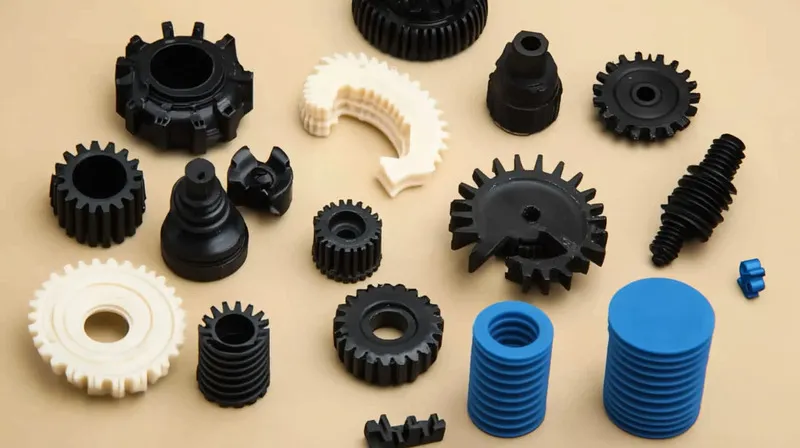
Thermoformed packaging is a staple in industries like food, medical, and consumer goods due to its versatility and affordability. However, manufacturing defects can undermine its quality, affecting everything from durability to safety. This article explores how these defects occur, their impact on packaging performance1, and ways to address them.
Manufacturing defects in thermoformed packaging, such as uneven thickness2, warping, and surface imperfections, can compromise structural integrity, appearance, and safety, making it less suitable for critical applications.
By examining the causes and consequences of these defects, manufacturers can refine their processes to ensure high-quality outcomes. Let’s dive into the world of thermoformed packaging and uncover the challenges posed by manufacturing imperfections.
Manufacturing defects in thermoformed packaging always lead to product failure.خطأ
Not all defects cause complete failure; some may only affect aesthetics or minor functionality, depending on severity and application.
Thermoformed packaging is more prone to defects than other methods.خطأ
With proper control, thermoforming can be as precise as other techniques; defect rates depend on process management.
- 1. ما هي العبوات المشكّلة بالحرارة؟
- 2. What are the Common Manufacturing Defects in Thermoformed Packaging?
- 3. How Do Manufacturing Defects Affect Thermoformed Packaging Quality?
- 4. What are the Key Factors Influencing Defects in Thermoformed Packaging?
- 5. How Can Manufacturers Mitigate Defects in Thermoformed Packaging?
- 6. What are the Differences Between Thermoformed and Injection-Molded Packaging?
- 7. الخاتمة
ما هي العبوات المشكّلة بالحرارة؟
Thermoformed packaging3 is made by heating a plastic sheet until it’s flexible, then shaping it over a mold using vacuum or pressure. This method produces lightweight, durable packaging like food trays, blister packs, and clamshells, tailored to specific needs.

Thermoformed packaging involves heating and molding plastic sheets into custom shapes, offering versatility across industries while requiring careful process control to avoid defects.
| Packaging Type | المواد الشائعة4 | التطبيقات |
|---|---|---|
| Food Trays5 | PET, PP, PS | Fresh produce, meat, snacks |
| عبوات الفقاعة | PVC, PET | Pharmaceuticals, electronics |
| Clamshell Containers | PET, PP | Consumer goods, takeout food |
Common Materials Used
- بولي إيثيلين تيريفثالات البولي إيثيلين (PET): Valued for clarity and strength, PET is ideal for food packaging but can warp if cooling isn’t controlled. Learn more about PET properties.

-
بولي بروبيلين (بولي بروبيلين): Flexible and heat-resistant, PP suits durable packaging but demands precise temperature management.
-
كلوريد البوليفينيل المتعدد الفينيل (PVC): Offers clarity for blister packs but raises environmental concerns.
-
PS (Polystyrene): Lightweight and cheap, PS is used in disposable trays but can crack due to brittleness.
PET هي المادة الأكثر استخدامًا في التغليف المشكل حراريًا.صحيح
PET’s clarity, strength, and recyclability make it a top choice for food and consumer packaging.
All thermoformed packaging materials are equally prone to defects.خطأ
Material properties vary; PS is brittle and crack-prone, while PP needs careful heat control.
What are the Common Manufacturing Defects in Thermoformed Packaging?
Defects in thermoformed packaging stem from issues during heating, forming, or trimming. These flaws can degrade the packaging’s performance and appeal.
Common defects include uneven thickness6, warping7, surface imperfections8, and trapped air, impacting functionality and aesthetics.

Uneven Thickness
When the plastic sheet stretches unevenly, some areas become too thin, weakening the structure. This often affects corners or edges, reducing durability.
الالتواء
Warping occurs post-cooling due to stress or uneven cooling, distorting the shape. This can prevent proper sealing or fitting.
Surface Imperfections
Scratches, bubbles, or discoloration mar the surface, affecting visual appeal and potentially brand perception, though functionality may remain intact.
Trapped Air
Air pockets trapped during molding create bubbles or voids, weakening the structure and posing contamination risks in food or medical uses.
Uneven thickness always results in packaging failure.خطأ
Mild unevenness may not cause failure, depending on the application and defect extent.
Surface imperfections are the most critical defects in thermoformed packaging.خطأ
Structural issues like warping often outweigh aesthetic flaws in importance.
How Do Manufacturing Defects Affect Thermoformed Packaging Quality?
Defects can ripple through the packaging’s performance, influencing strength, safety, and marketability.
Defects reduce structural integrity, compromise safety, and mar appearance, affecting suitability for intended uses.

Structural Integrity
Uneven thickness or warping weakens the packaging, making it prone to cracking or collapsing under stress, like during shipping.
السلامة
In food or medical contexts, cracks or air pockets can harbor contaminants, jeopardizing product safety and compliance with standards.
المظهر
Surface flaws like scratches can make packaging look cheap or untrustworthy, impacting consumer trust in retail settings.
الوظائف
Warped packaging may not seal properly, leading to leaks or exposure—critical failures in airtight applications.
All manufacturing defects in thermoformed packaging are visible to the naked eye.خطأ
Internal voids or stress may be hidden but still affect performance.
Defects can be fully eliminated with proper process control.خطأ
While control reduces defects, some variability persists in manufacturing.
What are the Key Factors Influencing Defects in Thermoformed Packaging?
Several process elements can trigger defects, offering points for improvement.
اختيار المواد9, heating temperature, mold design, and cooling rate are key factors that can either cause or prevent defects.

اختيار المواد
Materials like brittle PS or heat-sensitive PP require specific handling to avoid cracking or deformation.
درجة حرارة التدفئة
Incorrect heating—too hot or too cold—can cause thinning or incomplete forming. Optimal temperatures ensure uniformity.
تصميم القوالب
Poor mold design can overstretch areas, leading to thin spots or trapped air. Proper venting and geometry are essential.

معدل التبريد
Uneven or rapid cooling introduces stress, causing warping. Controlled cooling maintains shape stability.
Material selection is the most critical factor in preventing defects.خطأ
It’s vital, but temperature and mold design are equally significant.
Proper cooling can eliminate all defects.خطأ
Cooling helps with warping but doesn’t address heating or forming issues.
How Can Manufacturers Mitigate Defects in Thermoformed Packaging?
Reducing defects involves optimizing processes and enforcing quality checks.
يمكن للمصنعين استخدام process tweaks10, quality materials, rigorous inspections, and smart mold design to minimize defects.

تحسين العمليات
Adjusting temperature, pressure, and cooling rates ensures even forming and reduces stress-related flaws.
اختيار المواد
Choosing suitable materials—like PET for strength—lowers defect risks based on application needs.

مراقبة الجودة
Inspections, manual or automated, catch defects early. Learn about مراقبة الجودة11 techniques.
تصميم القوالب
Molds with uniform stretching and venting cut down on thinning and air entrapment.
Automated inspection systems detect all defects.خطأ
They excel at surface flaws but may miss internal issues without extra testing.
Proper mold design can prevent most defects.صحيح
Good molds reduce stretching and air issues, tackling major defect sources.
What are the Differences Between Thermoformed and Injection-Molded Packaging?
Both methods shape plastic packaging, but they differ in approach and outcomes.
Thermoforming molds heated sheets, while injection molding uses molten plastic, each with unique cost and precision profiles.

العملية
-
التشكيل الحراري: Shapes a heated sheet over a mold.
-
القولبة بالحقن: Injects molten plastic into a mold.
التكلفة
-
التشكيل الحراري: Cheaper tooling, great for smaller runs.
-
القولبة بالحقن: Costly upfront but efficient for mass production.

الدقة
-
التشكيل الحراري: Less precise, with thickness variations.
-
القولبة بالحقن: Highly precise, ideal for complex parts.
التطبيقات
-
التشكيل الحراري: Suits large, simple shapes like trays.
-
القولبة بالحقن: Fits small, detailed items like lids.
Thermoforming is always less expensive than injection molding.خطأ
It’s cheaper for small runs, but injection molding wins for large volumes.
Injection molding produces fewer defects.خطأ
Defect rates vary by process control, not method alone.
الخاتمة
Manufacturing defects in thermoformed packaging can undermine its quality, affecting strength, safety, and appeal. By understanding defect types, their impacts, and mitigation strategies12, manufacturers can enhance reliability and performance.
Thermoformed packaging remains a flexible, cost-effective choice, but precision in process and design is key to minimizing flaws. Explore more on thermoforming best practices13 to elevate your packaging game.
-
Packaging performance is vital for product safety and integrity. Learn more about the factors that affect it through this resource. ↩
-
Uneven thickness can lead to serious quality issues. Discover more about its implications and solutions by following this link. ↩
-
استكشف هذا الرابط لفهم مزايا وتطبيقات التغليف المشكل بالحرارة في مختلف الصناعات. ↩
-
Discover the materials that make thermoformed packaging effective and their specific uses in different applications. ↩
-
Learn about the advantages of food trays in packaging and how they enhance food safety and presentation. ↩
-
Understanding the causes of uneven thickness can help improve packaging quality and durability, ensuring better performance. ↩
-
Exploring the effects of warping can provide insights into maintaining shape integrity and enhancing sealing effectiveness. ↩
-
Learning about surface imperfections can help in improving visual appeal and brand perception, crucial for market success. ↩
-
Understanding material selection is crucial for preventing defects in manufacturing processes. Explore this link for expert insights. ↩
-
Understanding how process tweaks can optimize production will enhance efficiency and minimize defects in your manufacturing process. ↩
-
Exploring quality control techniques can help you implement best practices to catch defects early and improve product quality. ↩
-
Learning about these strategies can help manufacturers prevent defects and improve product quality. Check out this resource for valuable insights. ↩
-
Implementing best practices can significantly enhance the quality and performance of your packaging. Discover expert tips and techniques here. ↩








